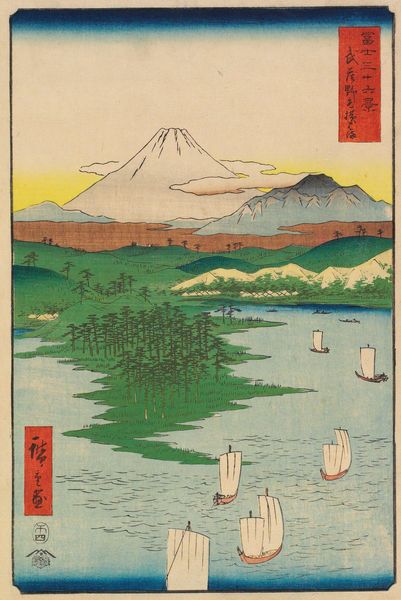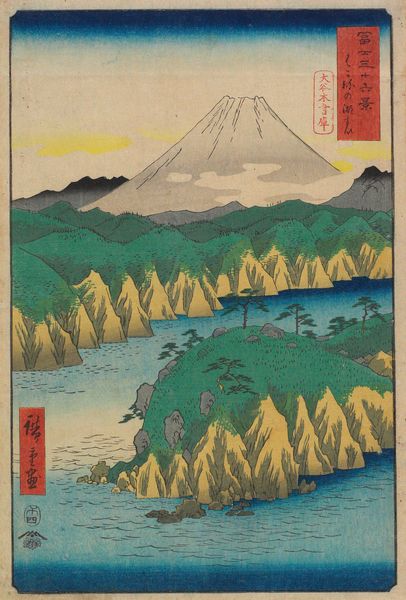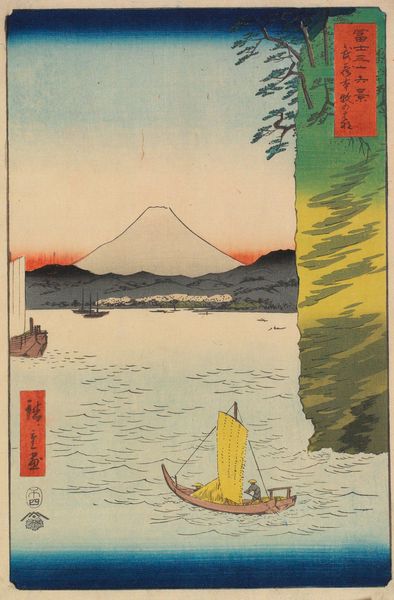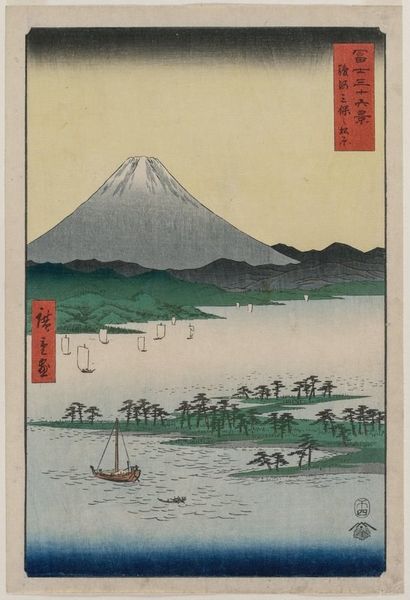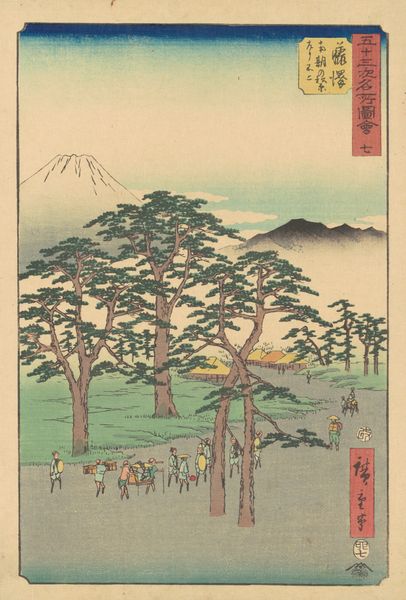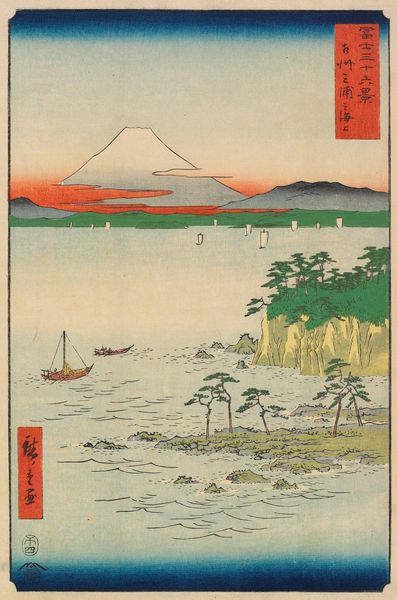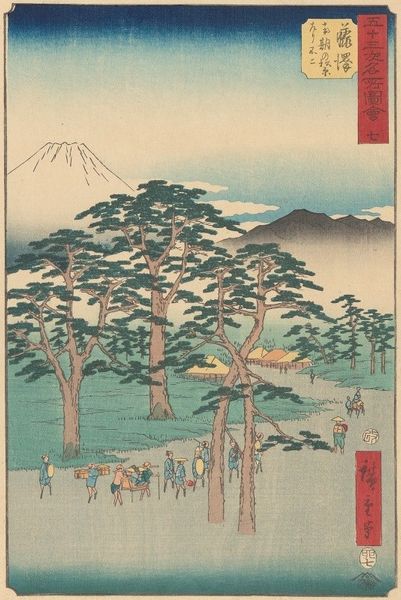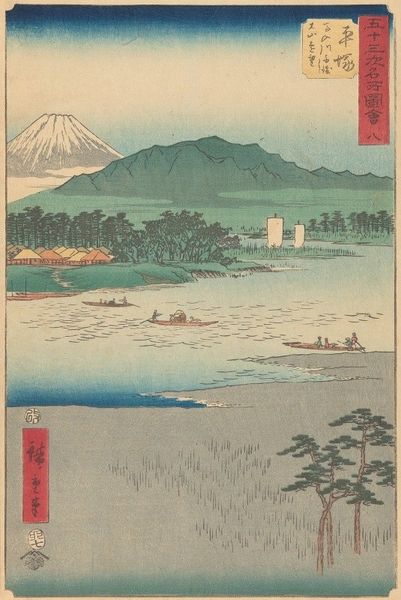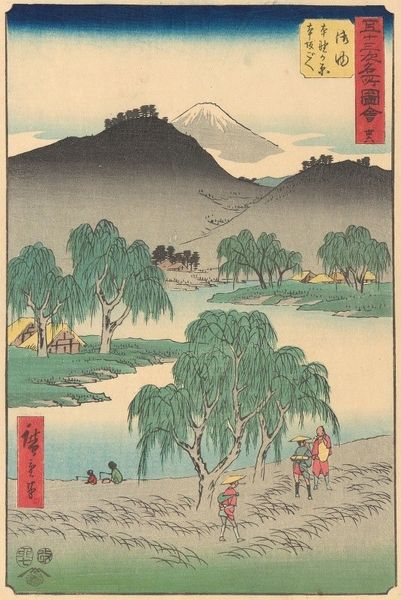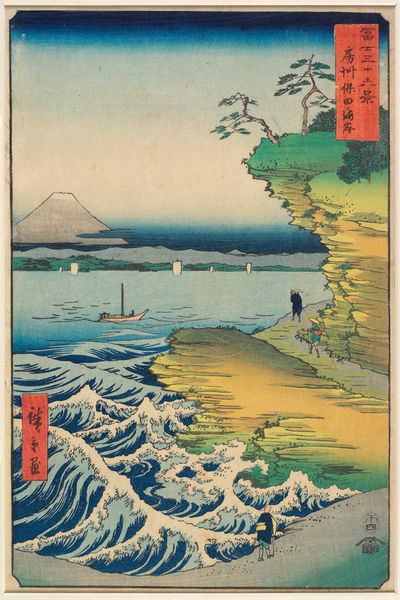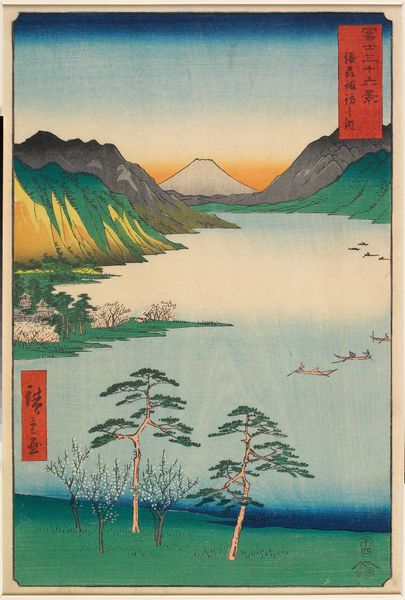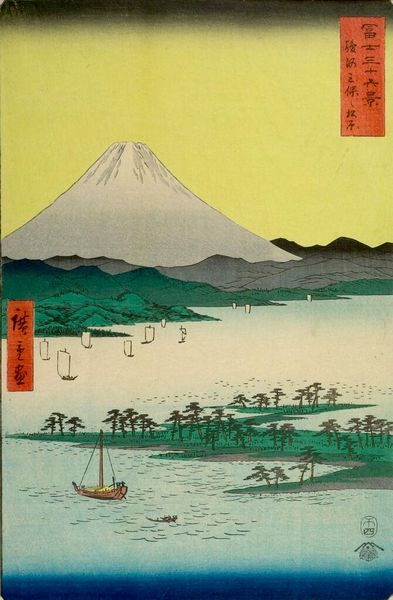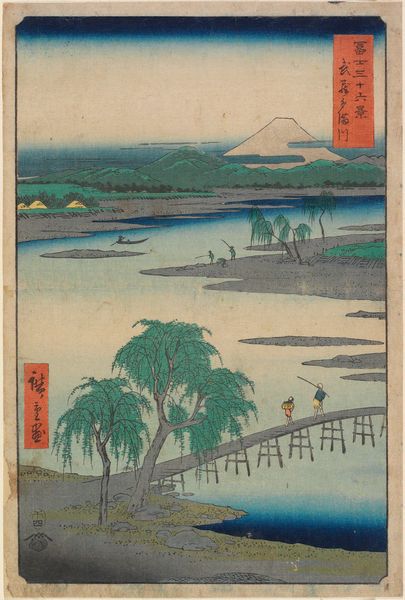
print, ink, woodblock-print
# print
#
landscape
#
ukiyo-e
#
ink
#
woodblock-print
#
watercolor
Dimensions: 13 5/16 × 8 11/16 in. (33.8 × 22.1 cm) (image, vertical ōban)
Copyright: Public Domain
Editor: Here we have "Misaka Pass in Kai Province," a woodblock print made around 1858, by Utagawa Hiroshige. It’s incredibly serene. That iconic, solitary mountain in the background, the figures on the path, it feels almost dreamlike. What stands out to you in this piece? Curator: What strikes me immediately is the conscious framing. The tree, dramatically bending, acts almost as a gate. And then, consider Mount Fuji. More than just a mountain, it's an anchor of the Japanese spirit, a sacred presence. Why do you think Hiroshige chose this particular vantage point? Editor: Perhaps to emphasize the journey, the physical act of passing through this space? Or to contrast the smallness of humans against the grandeur of nature? Curator: Exactly! It’s about the symbolic weight of pilgrimage. People have traversed these paths for centuries, imbuing them with layers of meaning. Notice the muted colours, evoking a sense of distance, of memory… Could this landscape also be an interior one? Editor: An interesting idea, as if he’s not just depicting a place but also a feeling or state of mind associated with this landscape. It’s more than just a scenic view. Curator: Landscapes aren’t just pretty pictures. They hold histories, beliefs, longings. This image becomes a mirror reflecting cultural identity and spiritual quests, condensed into visual symbols. Editor: I’m now looking at the figures with new eyes, as symbols for pilgrims of the spiritual journey. Curator: And that’s the power of symbols! They’re never fixed, but echo with the passage of time and the weight of collective experience. What a fascinating way to think about landscape art!
